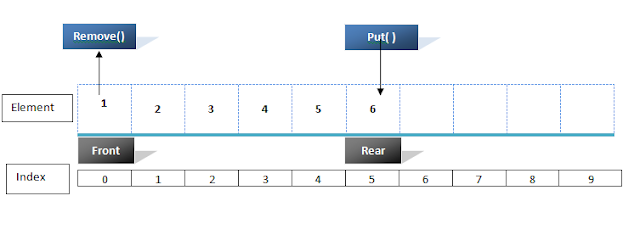A queue is a linear list of elements in which deletions can take place only at one end, called the front of the stack, and insertion can take place only at the other end, called the rear. The term FRONT and REAR are used in describing a linear list only when it is implanted as queue. Queues are also called First in First out (FIFO) Lists. This makes the queue a First-In-First-Out (FIFO) data structure.
A queue is an example of a linear data structure. Queues provide services in computer science, transport, and operations research where various entities such as data, objects, persons, or events are stored and held to be processed later. In these contexts, the queue performs the function of a buffer. Queues are common in computer programs, where they are implemented as data structures coupled with access routines, as an abstract data structure or in object-oriented languages as classes. Common implementations are circular buffers and linked lists.
Remove ( ) : Deletes an element from the front of the queue.
Queue
When you run the program, the output will be:
Queue is fullQueue is full123


please correct this program ...Queue<t> I thing it come Queue...
ReplyDeleteThanks friend for your information ..
ReplyDeletethank you for surviving me :)
ReplyDeletePost a Comment
Thank you for vising